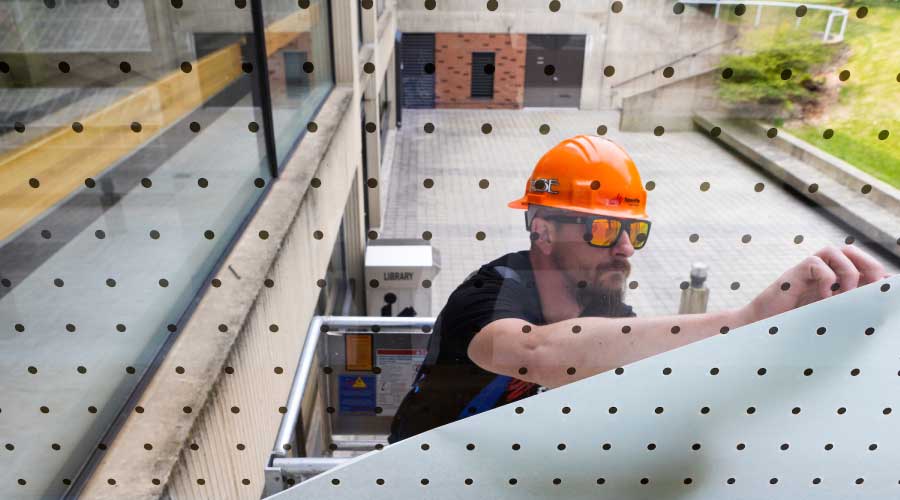The Benefits Of Metal Wall Cladding
SPECIAL REPORT PREPARED FOR THE METAL INITIATIVE
While it is difficult to estimate how much of the 1.2 billion square feet of non-residential wall cladding in the United States is in need of replacement, the wall retrofit market continues to grow despite an overall decline in non-residential construction.
Metal wall cladding, much like metal roofing, is also generating a strong ROI for owners looking to modernize their facilities.
New metal wall panels can be installed over almost any cladding, including brick, block, pre-cast concrete, stucco, synthetic stucco (EIFS) or even an existing metal system.
The installation method is standard throughout the industry; typically, 16-gauge metal furring is secured over the existing cladding to provide new sub-framing. The depth of the furring should reflect the insulation thickness and available airspace to reduce energy consumption and waste.
Most metal and metal composite wall profiles are fashioned from painted, galvanized steel and aluminum, though natural metals such as zinc and copper, as well as stainless steel, are becoming increasingly popular alternatives. Insulated metal wall panels are also widely used in applications where achieving and maintaining a particular temperature range is critical, such as cold storage facilities.
Cladding profiles range from flat or flush to several corrugated patterns. The most common installations are vertical, though some design schemes allow for a horizontal layout. To ensure that retrofit metal wall installations are fully moisture-resistant, all systems come with matching flashings that are installed around window sills, windows, corners and copings. The installation of cladding adjacent to roof flashings should always be coordinated with a roofing contractor.
When retrofitting a wall system with metal, a professional engineer should be consulted to calculate loads and assess the integrity of spans and furring attachments. Before attaching metal to older masonry walls, it is advisable to have the fastener supplier conduct a fastener pullout test to determine the stability of the underlying substrate.
Like metal roofing, new metal wall panels can significantly increase the aesthetic appeal of a dated or damaged building — making it easier to lease or sell. 
About TMI
The Metal Initiative is a coalition of manufacturers, individuals and associations that have come together to provide information on the features and benefits of metal in construction. Carrying its message of metal primarily to the professional building owner community, The Metal Initiative seeks to gather and disseminate useful information for decision-makers.
The Metal Initiative also seeks to dispel myths that have permeated the construction community regarding the use of metal. These myths, which have grown over time have kept many owners from realizing the full benefits that will accrue when they chose metal for their projects.
For more information, visit The Metal Initiative.
|
Chuck Howard is a professional engineer and roofing consultant who has specialized in metal roofs for more than 30 years. He currently provides commercial roof consulting to contractors, architects, building owners and The Metal Initiative.
Jim Tuschall has been associated with Tuschall Engineering for 34 years and now serves as its president and CEO. He is an active member of The Metal Construction Association and serves as vice chairman of its wall panel council and as a member of its wall retrofit task force.
Related Topics:











